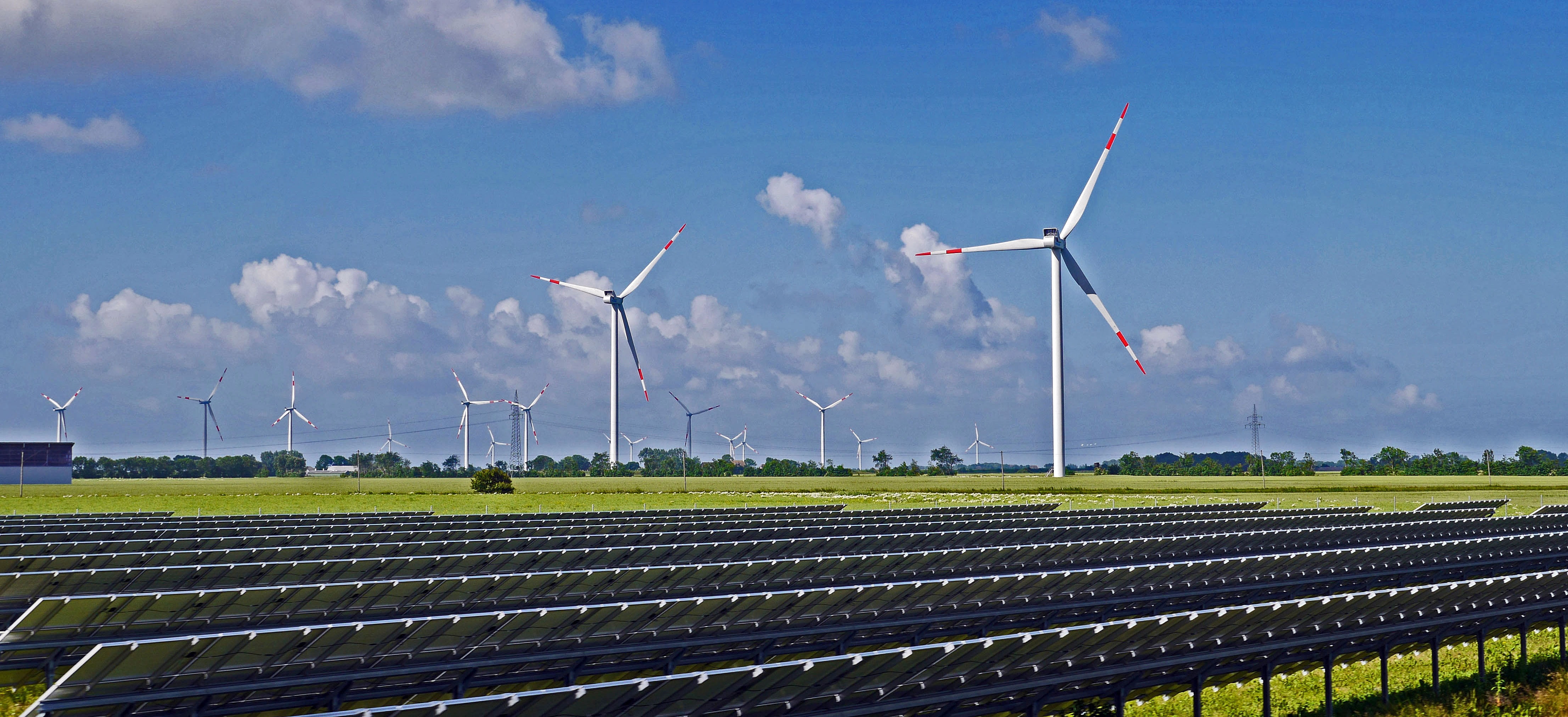Are you still struggling with high utility costs? You’re not alone. According to the Office for National Statistics, in the UK, two-fifths of all homes have problems paying their energy bill. Additionally, the research indicates that 44% of the British population is cutting back on their energy usage in an effort to reduce expenses. However, in addition to usage reduction, utility costs can be reduced by changing energy suppliers. Here’s a detailed look at the cheapest energy providers UK and related topics.
Who is the cheapest energy supplier? A quick check.
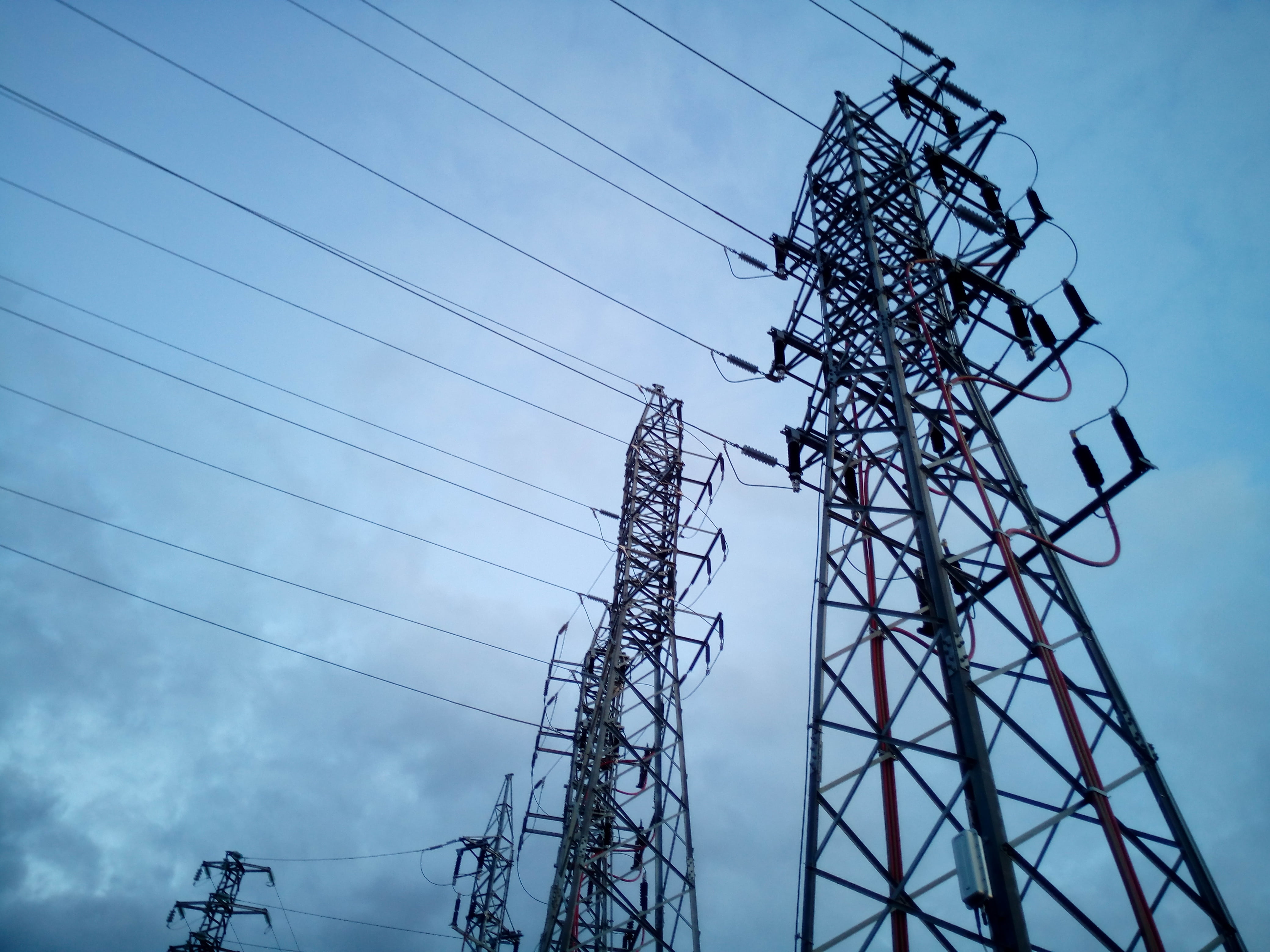
Who are the cheapest energy suppliers in the UK? Let’s take a look and prepare to choose a better energy supplier. And from the table below, we can see that Ocutopus Energy is the cheapest energy supplier in the UK.
| Rank | Energy suppliers | Electricity price (per KWH) | Natural gas price (per KWH) |
|---|---|---|---|
| 1 | Octopus Energy | about £0.28 | about £0.07 |
| 2 | Outfox the Market | about £0.30 | about £0.08 |
| 3 | E.ON | about £0.31 | about £0.08 |
| 4 | Shell Energy | about £0.33 | about £0.08 |
| 5 | Utilita Energy | about £0.34 | about £0.08 |
| 6 | Scottish Power | about £0.35 | about £0.09 |
| 7 | British Gas | about £0.36 | about £0.09 |
| 8 | EDF Energy | about £0.39 | about £0.10 |
| 9 | Utility Warehouse | about £0.40 | about £0.10 |
| 10 | Electrocity | about £0.41 | about £0.10 |
Top 10 cheapest energy suppliers in the UK
After your quick check of the cheapest energy providers in the UK, here is a detailed introduction to our top 10 most affordable suppliers. Our updated lists help you get to know them better, so you can compare and choose the best option to save on your bills.
1. Octopus Energy
Octopus Energy is one of the UK’s cheapest gas and electric suppliers. It is also a global clean energy tech business mainly engaged in the research, application and promotion of new energy technologies. It provides solar power generation, wind power generation, energy trading and other services, committed to providing users with related clean energy and services. Octopus Energy provides great value for the long term, because its standard prices have always been cheaper than any other large suppliers. And Octopus Energy is also the UK’s most awarded energy supplier.
2. Outfox the Market
Outfox the Market has remained one of Britain’s most reliable and cheapest energy suppliers. Although established only in 2017, it has already been named Which’s “Best Energy Supplier of 2021”. No hidden fees make Outfox the Market one of the market leaders for customer service with consistent top 3 ratings in Citizens Advice energy supplier survey.
3. E.ON
E.ON in the UK is a subsidiary of E.ON, the world’s largest electricity and gas company, whose business is mainly gas and electricity in Europe. Now it has 5.6 million customers in the UK. E.ON has a rich history of leading energy transition in the UK. Here are some of the tangible actions to drive forward the company’s collective transition to a more sustainable, low-carbon future. The first is that 100% of E.ON’s renewable electricity has a fixed tariff. And E.ON has invested £3.5 billion in UK renewables since 2009.
4. Shell Energy
Shell Energy is an international energy company founded in 1897 in the United Kingdom. It started as a small trading company in London, and is now one of the largest independent energy suppliers in the world, operating in more than 70 countries. Shell’s goal is to jointly drive the global transition to a low-carbon energy system by providing more and cleaner energy solutions. Shell Energy remains one of the largest producers in the North Sea, helping to supply more than 20% of the UK’s natural gas. In the coming years, Shell aims to play a critical role as the UK seeks to strengthen its energy security and achieve its net-zero emissions target by 2050. We strive to be a major investor in the UK’s energy system, helping our customers decarbonise with a focus on transport and industry.
5. Utilita Energy
Utilita Energy is the UK’s first and only pay-as-you-go energy supplier. Utilita Energy distinguishes itself from other energy suppliers in the UK market by offering special prices that do not include fixed charges, so it is one of the cheapest energy supplier UK. Customers only pay for the energy they actually use and do not incur any further charges if they do not use it at all.
6. Scottish Power
Founded in 1990, Scottish Power is a vertically integrated energy company headquartered in Glasgow, and has subsequently become one of Scotland’s leading energy companies.
Scottish Power owns the transmission grid in southern Scotland and supplies gas to businesses and homes across the UK. Scottish Power’s green tariffs are backed by 100% green electricity from our wind farms in the UK. In addition, it has also raised £40 million to help beat cancer, which shows that the company is also actively shouldering social responsibility.
7. British Gas
British Gas is a British energy company, which can trace its roots back to the Gas Light and Coke Company, founded in 1812 as one of the world’s first public utility companies.
The company provides water, gas and electricity services to more than eight million homes in the UK. It has been the largest energy supplier in the UK for many years, and is considered one of the six largest energy companies in the UK. The energy supplier’s unit price and fixed costs are guaranteed to remain unchanged over the contract’s life, which is its most wonderful feature. When paired with Hive EV Charging and Smart Charge, its Electric Driver Tariff is the UK’s lowest rate1. British Gas is also actively reducing emissions. They’re helping the UK hit zero carbon emissions by 2050, and aiming to get 40% of the way there by 2034.
8. EDF Energy
EDF Energy is one of the UK cheapest energy suppliers. It is an integrated energy company in Britain, wholly owned by French state-owned company EDF (Électricité de France). It has a range of activities covering electricity generation and the sale of gas and electricity to homes and businesses across the UK. It handles 5.22 million business and personal customer accounts. More importantly, as Britain’s biggest generator of zero-carbon electricity, EDF Energy is busy building Britain’s own wind, nuclear and solar energy supply to reduce British reliance on energy imports and help prevent future price rises.
9. Utility Warehouse
Utility Warehouse is the UK’s only genuine multiservice provider, trusted by over a million customers and fully regulated by Ofgem, Ofcom and the Financial Conduct Authority. One of its outstanding advantages is that it bundles all customers’ home services into one, simple bill. Utility Warehouse’s energy is always cheaper than the price cap. Customers can get up to £50 off when they take energy and two other services, as well as get the UK’s best value unlimited deal when they take two or more SIMs.
10. Electrocity
As the headline on the front page of Electrocity’s website states, “Britain’s Greenest Energy Supplier”, Electrocity takes the environment and emissions reduction very seriously and is one of the cheapest energy suppliers in UK. All its electricity is certified green and vegan. Electrocity’s gas is a mix of carbon-neutralised natural gas and sustainable green gas. This company turns customers bills into mills. Therefore, instead of paying dividends, it invests customers’ bills in building new forms of green energy.
Which is the cheapest energy tariff?
After choosing an energy supplier, you should choose a cheap and appropriate energy tariff. Generally, fixed price energy tariff is the cheapest. If you’re new here, you may not know the local rules. For your reference, the following is a brief introduction to the energy tariffs that are likely to be offered by UK energy suppliers. You can choose the right tariff based on the following information, combined with your personal needs.
- Fixed price energy tariff
The fixed price energy tariff (also known as fixed rate plan) is a gas and electricity tariff that offers a fixed rate per kilowatt hour for a fixed period (usually 12 months, but can up to 3 years). The bills you need to pay won’t be affected by rising or falling energy prices. Fixed tariffs are generally the cheapest type of tariff on the market and make up most competitive deals in energy switching.
- Standard variable tariff (SVT)
Generally speaking, standard variable tariff (SVT) is the energy supplier’s default tariff, and is usually the most expensive type of tariff on the market. As SVT is variable, the unit price of gas and electricity can fluctuate depending on your energy provider, but you must be notified in advance. It is the energy tariff that is affected by price rises and energy price caps, the level of which changes every three months.
- Dual fuel energy tariff
The dual fuel energy tariff means that you can receive your gas and electricity services from the same energy supplier, rather than the typical case that you receive these services from two separate providers. Because its convenience, dual fuel tariff is quite popular. And usually, getting two services from one company means a cheaper price.
- Prepayment energy tariff
The prepayment tariff, also known as the Pay-As-You-Go tariff/meter, which you have to pay for energy before using it. Payment can be done via an app, a key, a token, etc. The meter uses up this credit until it runs out, and it might add a small emergency amount of cash before your energy supply is shut off.
- Economy 7 energy tariff
The Economy 7 energy tariff is an electricity tariff scheme that applies primarily to households and small businesses. It is characterized by dividing one day’s electricity consumption into two distinct periods: peak and off-peak. Specifically, the economy 7 tariff typically provides a lower tariff during the seven-hour off-peak period in the evening, while charging a higher tariff during the rest of the day.
- Economy 10 energy tariff
It is similar to the economy 7 energy tariff. However, it provides more periods of low tariffs so that customers can use electricity during those periods to save money. The economy 10 tariff typically divides the day into three periods: two off-peak periods and one peak period.
- Green tariff
The green tariff is an electricity supply service that commits a portion of every unit of electricity paid by customers to support renewable energy projects. This tariff is designed to encourage the use of renewable energy, reduce reliance on fossil fuels and help reduce greenhouse gas emissions. And with the cost of renewable energy falling, the green tariff should now be the cheapest tariff on the market.
- Tracker tariff
The tracker tariff is a contract for electricity supply in which the price of electricity is subject to changes in the market price of electricity. Tracker tariffs directly follow price indices, such as wholesale costs. They float up and down and are updated daily, making it difficult to know if they are cheaper for you. This tariff is often closely linked to renewable energy generation, especially intermittent energy sources such as solar and wind.
Which is the cheapest way to pay bills?
Many energy suppliers in the UK offer both gas and electricity, so it is possible to pay both gas and electricity bills after choosing your supplier. Paying by direct debit is usually the cheapest way to pay bills, and there are also many other ways to choose.
- Direct debit: This payment method deducts the fee from your bank card, which is very convenient.
- Monthly direct debit: Based on your former information, the supplier estimates your electricity or gas consumption for a year, divides it into 12 months, and charges the corresponding amount to your account each month.
- Quarterly direct debit: It is similar to monthly direct debit except that it is paid once every three months.
- Pay on receipt of bill: The energy supplier sends home bills every three months, and the energy can be used now and paid later. Both cash and bank cards are accepted. This method works well for newcomers who don’t have a local bank account.
- Prepayment meter/Pay as you go: The landlord or agent will give you a key or card to recharge, and you should go to the post office, convenience store, or online to recharge. After charging, take the key or card home, plug it into the electricity or gas meter, and follow the prompts to complete the final recharge.
How to choose your energy supplier?
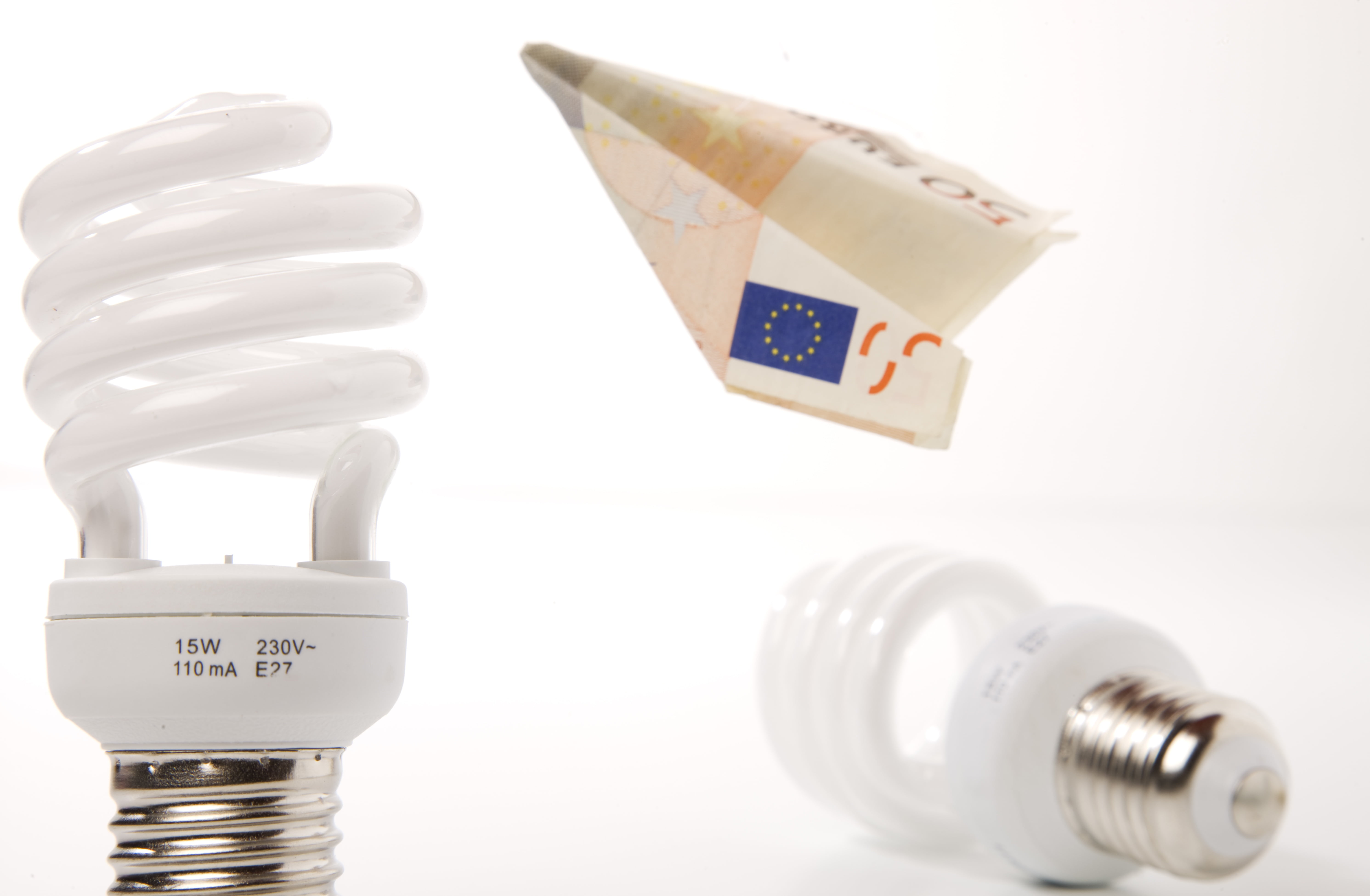
If you’ve decided to switch energy suppliers, the next step is to find the one that’s best for you. How do you do that? Follow these steps to make your own selection.
- Check your current energy suppliers and deals for easy comparison.
- Use online comparison websites to find the most suitable energy supplier.
- Check your electricity and gas bills to know how much you typically spend and your consumption habits, for choosing the most appropriate tariff.
- Compare different tariffs to find the cheapest and most suitable one.
- If you are a student, check with your supplier or the government to see if there are any preferential policies for students. If you rent a student apartment, usually the rent covers the bills. You can find these properties at uhomes.com.
- Decide on your payment method.
- Before you switch your energy supplier, think twice about your options.
Why should I switch energy suppliers?
- Cost savings:
-
-
- Price factor: The new supplier may offer the cheapest gas and electric, which, in the long run, can reduce the operating costs of a company or the living expenses of a household.
- Contract terms: The old supplier’s contract may have unfavourable terms, such as price adjustment mechanism, liquidated damages, etc., while the new supplier may offer more favourable contract terms.
-
- Service quality:
-
-
- Response speed: New suppliers may provide faster service response and resolve failures or problems.
- Customer service: New suppliers may provide better customer service, including easier communication channels and more professional service teams.
-
- Energy Types:
-
-
- Environmental protection needs: Some suppliers may provide cleaner, renewable energy, such as wind, solar energy, etc., to meet the needs of enterprises and individuals for environment-friendly energy.
- Energy diversity: Switching suppliers can provide access to different types of energy supply, such as switching from traditional energy to renewables.
-
- Market changes:
-
-
- Market volatility: Price fluctuations in the energy market can result in existing suppliers’ prices no longer being competitive.
- Policy adjustments: Changes in government energy policies can affect energy suppliers’ operating costs.
-
- Technological innovation:
-
-
- New technology applications: New suppliers may adopt more advanced technologies to improve energy efficiency and reduce costs.
- Intelligent services: Some suppliers provide intelligent energy management services to help users control their energy consumption better.
-
How to switch energy suppliers?
Whether it’s to compare energy prices, improve the quality of your service, or choose a more environment-friendly energy source, it’s vital to understand the specific methods and steps you can take to switch your energy supplier. However, some worry that the process of changing suppliers is too complicated. The following is a detailed introduction to the process of switching energy suppliers to help you successfully complete the process and enjoy better energy services.
Information to be obtained in advance
Here’s what you need to know before switching your energy supplier.
- Postcode
- Name of current energy supplier or contract
- Name of the current tariff
- Amount you pay for your energy per unit, this is shown in kilowatt-hours (kWh) on your bill
- Amount of energy you use each year
The process of switching energy suppliers
Don’t worry about the complexity switching your energy supplier, here’s the process of how to switch your energy supplier in the UK.
- Search on Google for energy comparison sites such as USwitch.
- Enter your postcode to check your local gas and electric suppliers, compare their prices, services and other information, and choose the best package.
- Register an account with the energy supplier of your choice and fill in your personal information.
- According to the tips on the website, switch the energy supplier step by step.
When to switch energy suppliers?
After reading so much information, you may want to switch energy suppliers at once. Wait a minute! It is not always appropriate to switch energy suppliers. So when should you switch it?
As a matter of experience, you should get into the habit of switching energy sources every 12-18 months or when your current contract (if you’re on a fixed tariff) expires. If you are no longer on a fixed tariff and you have not signed up for a new deal yourself, then you may be moved to the provider’s standard variable tariff, which tends to be the most expensive tariff they offer.
To avoid incurring these higher fees, keep an eye on the calendar and make sure you know when you are eligible to switch to a new contract under the terms of your current contract.
When should you consider switching your energy supplier?
If you have one of the following situations, you are able to consider switching your energy supplier.
- Prices go up
Sometimes, you may be forced to switch to a more expensive package because you have exceeded the new subscriber offer period, or a specific offer package period. Please pay attention to your contract, and promptly change to a more reasonable package or change the supplier.
Gas and electricity prices can be affected by many factors, so you should always keep an eye on the related information and news to compare energy prices and switch to the cheapest energy supplier UK.
- Life events
There may be events in your life that force you to change providers, such as moving residences, retirement, working from home, etc. In these cases, you may need to switch to a supplier that is more suitable for you.
When is the best time of year to switch my energy supplier?
October is the best time of year to switch your energy supplier, because the days get shorter and you have to use more gas and electricity for lights and heating. Switching energy supplier before winter may save more money for you.
When is the best time in my contract to switch my energy supplier?
The best time in your contract to switch energy provider is when you no longer have to pay early exit fees. Customers have right to switch their energy suppliers from 49 days before the end of their contract, because Ofgem has stated that exit fees should not be applicable to switches from a fixed-term tariff within this period.
How often do energy prices change?
Energy prices are influenced by various factors. But you don’t have to worry about your electricity or gas bills changing without your knowledge, because Ofgem sets the energy price cap. The price cap also ensures that the price of the standard variable tariff (default tariff) is fair and reflects the cost of energy.
The actual tariffs you are charged will depend on where you live, how you pay your bill and the type of meter you have. Please go to Ofgem’s website and get the energy price cap, standing charges, and unit rates by region. Ofgem reviews and updates the price cap level every three months.
Will gas and electric price rise?
UK electricity prices decreased 19.80 GBP/MWh or 22.97% since the beginning of 2024, according to the latest spot benchmarks offered by sellers to buyers priced in megawatt hour (MWh). Historically, the United Kingdom electricity price reached an all-time high of 580.55 in September of 2022.
Despite the recent small decline in electricity prices, in the long term, electricity prices will still rise due to the overall increase in global energy prices, such as crude oil. Unless renewable energy can well replace the role of traditional energy in power generation.
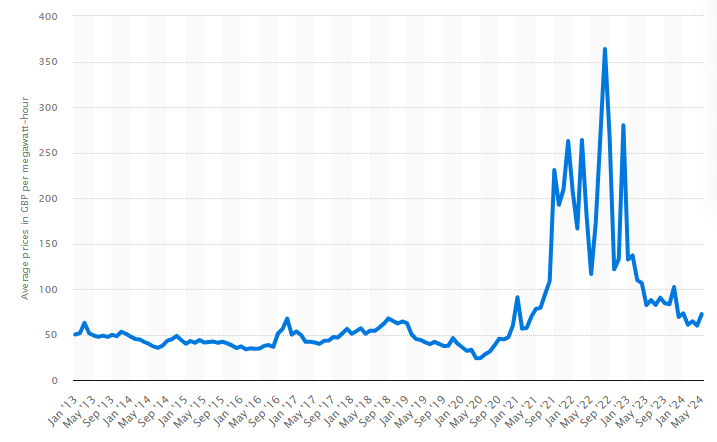
Gas prices in the UK have risen recently because of bad weather. However, the market expects natural gas prices to likely fall next week as the weather becomes milder and windy. Despite this, the UK gas market has remained relatively stable, thanks to ample supply from Norway and lower demand due to increased use of wind and solar power.
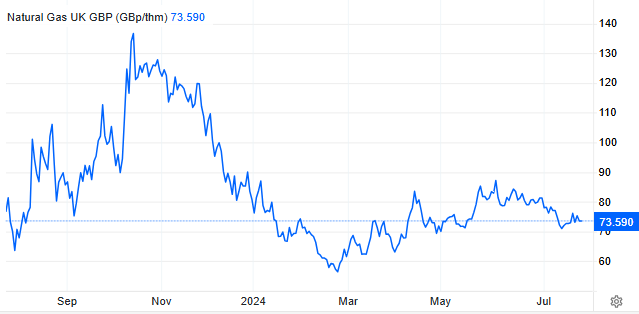
Choosing the cheapest energy supplier UK
In the current background of fluctuating global energy prices, choosing the cheapest energy supplier is even more important for households and businesses.
First, the UK’s energy market is highly competitive, and consumers can choose multiple suppliers. According to the latest data, certain providers stand out for their low prices and good customer service. Some small or emerging energy companies are often able to offer more competitive prices than large traditional suppliers.
Second, when choosing an energy supplier, consumers should consider other factors besides price, such as contract terms, quality of customer service, proportion of renewable energy use, etc. Although some suppliers have low prices, there may be deficiencies in the quality of service, so it is necessary to consider comprehensively when choosing.
Finally, consumers are advised to regularly compare offers from different suppliers and make use of online tools to compare energy prices to ensure the best possible energy supply options. In addition, understanding the government’s energy subsidy policies and preferential activities can also help consumers further reduce energy costs.
Through proper selection and comparison, consumers can find the cheapest energy supplier and effectively control the energy expenses of their home or business.
FAQ
Octopus Energy is the cheapest energy supplier in the UK. Check the energy comparison below.
- The cheapest variable gas and electricity: Octopus Energy at £141.66 per month (plus get £50 when signing up).
- The cheapest fixed gas and electricity (with credit included): Octopus Energy at £134.44 per month.
- The cheapest fixed gas and electricity (without credit included): Outfox The Market at £134.58 per month.
Octopus Energy and Outfox The Market are some of the best and cheapest energy suppliers in London accommodation.
Don’t worry. There’ll be no interruption to your supply during the switch.
After submitting your application, your new energy supplier will contact you to inform you when they will transfer your energy supply to them. It takes up to 5 working days per household.
| Energy Suppliers | Tariff Name | Tariff Description | Monthly Cost |
|---|---|---|---|
| British Gas | Standard Variable v16 | Variable tariff. Rates and charges may fluctuate over time within the Ofgem Price Cap | £165.02 |
| Price Promise | This is a 12-month fixed tariff at a rate with an exit fee of £100 per fuel. | £143.79 | |
| Octopus Energy | Tracker Tariff | Smart tariff where prices change daily. No contract. No exit fees. | £116.90 |
| OctopusFixed 12m | 12-month, fixed rate contract. No exit fees. | £134.77 | |
| Flexible Octopus | Flexible tariff where prices go up and down with the market. No contract. | £130.92 |
Due to the recent upward trend of energy prices, it is recommended to choose a fixed energy tariff. If energy prices drop later, energy providers should also offer more affordable fixed tariffs, which you can keep an eye on it and switch tariff or supplier in time.





